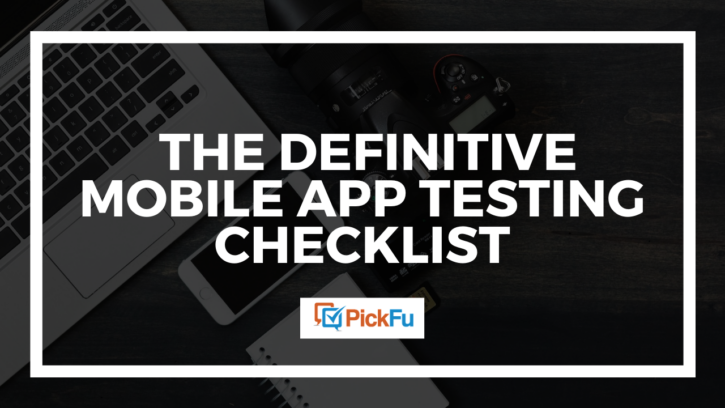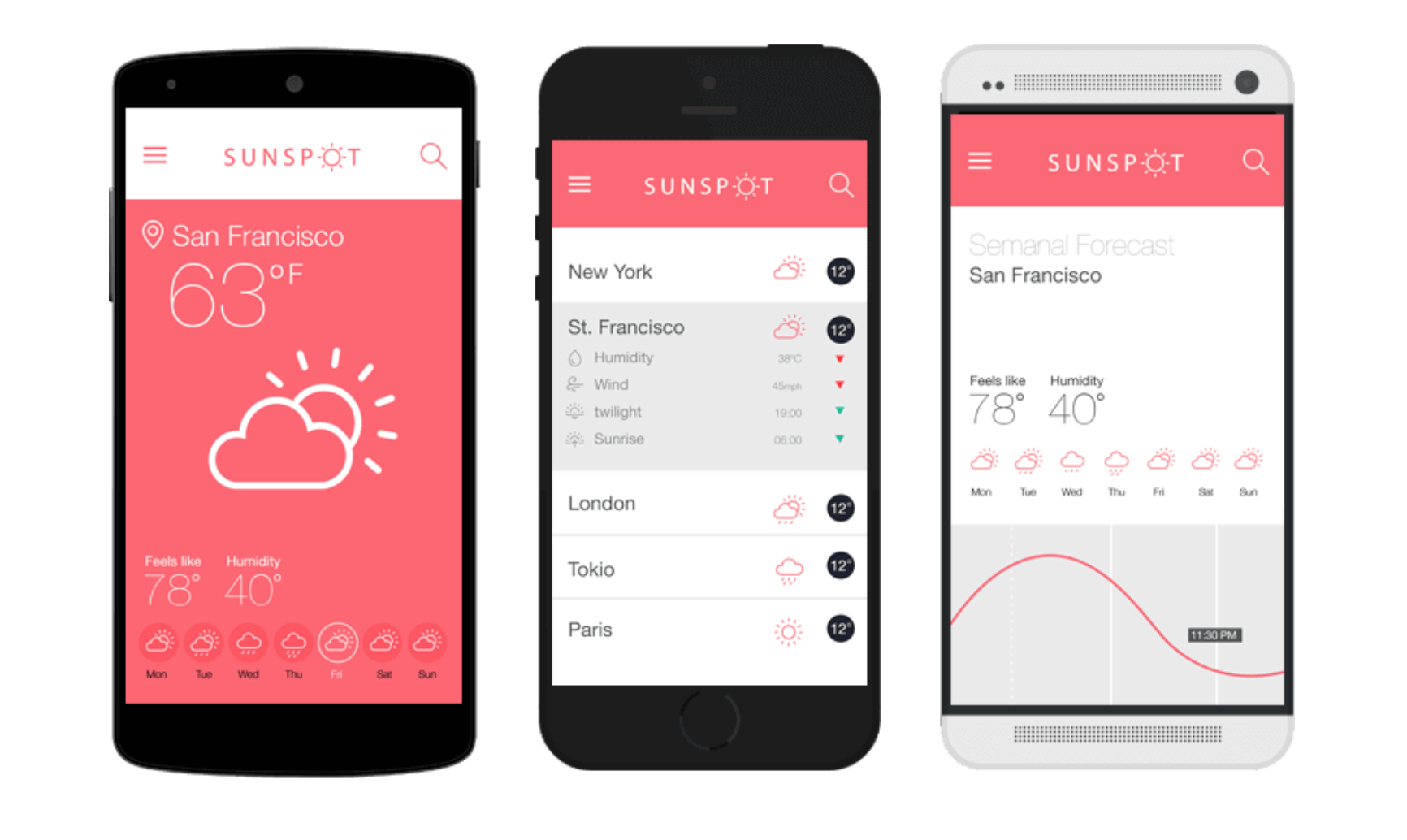Getting users to download your app is not as simple as “If you build it, they will come.” Even if they do, that’s still only half the battle. Research shows almost 25% of users abandon mobile apps after a single use. Why? Technical flaws.
Unfortunately, crashes and freezes are common. Even more unfortunately, customers ditch apps that don’t perform properly and disregard the user experience, which is why it’s crucial to test apps thoroughly. However, some businesses still skip this critical step in mobile app development.
If you want a piece of the $143 billion app pie, let this mobile app testing checklist be your guide.
What is mobile app testing?
Mobile app testing predicts a user’s experience and assesses an app’s performance. Through variations of an in-app experience, developers and quality assurance (QA) testers determine if a desired action meets defined parameters and, if not, how to fix errors and bugs.
Mobile app testing is a complex but imperative process. In includes several types of testing across various operating systems and a range of devices and scenarios.
Why should I test a mobile app?
Simply put, to optimize your app.
Fifty-two percent of mobile app users are frustrated by overall app performance. Factors include load times, crashes, glitchy features, and complicated user interface (UI)/user experience (UX).
By testing, you solve pain points in your customer’s journey and improve app-specific metrics. Thorough testing guarantees your app is not only ready for the public but is also of superior quality. It helps to eliminate most risks and improve your business’s bottom line.
What should I test in a mobile app?
In such a highly competitive market, your app’s quality, usability, and security must not only meet but exceed expectations. You have to iterate quickly through the software development life cycle, know which performance areas to check, and understand and fix errors and bugs before finalizing the development phase.
QA software testers typically run parallel tests in these three areas:
- Device performance
- Server/application program interface (API) performance
- Network performance
Before we get to our mobile app testing checklist, let’s walk through what to test in each of these areas and why.
Device performance
Battery consumption: Ensure your mobile app doesn’t eat away at the device’s battery life.
Memory consumption: Certain app functionalities increase memory consumption. Test to prevent your app from hogging precious mobile resources.
Hardware and software variations: While there are other operating systems, Apple and Android are the main ones. Still, that’s two systems with numerous versions and devices.
Usage with other apps: The average person uses nine mobile apps a day — often more than one at a time. When your app runs in parallel with other apps, there should be no interference.
App in the background: When you app is running in the background and then retrieved, it should remain in the same state. Otherwise, data gets lost.
Storage: Our phones work overtime as our entertainment source, personal assistant, and keeper of personal information. You need to know how much data your app requires and how this may affect monthly data plans.
Feature functionality: Testing app functionality helps you avoid taking a bug-riddled app live and validates your product development ideas.
Server/API performance
Load time: Response time is critical to an app’s performance: over 25 percent of users abandon mobile apps after just 3 seconds of load delay.
Server downtime: If your main server is down or unreachable for any reason, the native database should save all data. Another solution could be the failover — or switchover — database servers. The failover/backup server should be in continuous replication and synchronization with the main server.
Network performance
Network compatibility: Simulate different network conditions and quality, from various cellular networks to mixed Wi-Fi speeds, and see how your app behaves when switching from one network to another.
Jitters: When there’s a delay in receiving information on the network, that’s a jitter. It happens when there’s a problem with connectionless networks or data packet switch networks.
Packet loss: In the case of complete packet loss, the app should resend the request for the information or generate alerts accordingly.
Types of mobile app testing
There are three main types of mobile apps:
- Native: developed specifically for individual platforms
- Mobile-web: opens in a device through a web browser
- Hybrid: combination of native and mobile-web
Each type has specific testing requirements, but (thankfully) there’s a lot of overlap, as you’ll see below.
No matter what type of app you’re creating, pay attention to these testing types and best practices as you prepare to launch.
Mobile app testing checklist
✓ Front-end testing: This checks anything associated with the Graphical User Interface (GUI) or anything visible client-side.
✓ Back-end testing: Also known as database testing, back-end testing checks the server-side of your app.
✓ Usability testing: You want to guarantee your app is easy to use. The focus should be on how it feels to use the app. Note, there are many different types of usability testing. Consider using different ones when testing your app.
✓ User perception testing (UPT): First impressions are everything. Use an instant polling platform such as PickFu to understand how potential users feel about various aspects of your app.
✓ User acceptance testing (UAT): Also called beta testing, this is where actual end users test the software to make sure it can handle tasks in real-world scenarios.
✓ Functional testing: Mobile apps usually involve several features, both built into devices and built into the app. Functional testing looks at these interactions.
✓ Compatibility testing: See how the app performs on various devices, browsers, and operating system versions.
✓ Interface testing: Interface testing pays attention to an app’s technological aspects, such as whether the buttons, settings, navigation, and menu options work as they’re supposed to.
✓ Performance testing: A core testing function, this tests an app’s performance by changing the connection from 2G, 3G to Wi-Fi, sharing the documents, battery consumption, etc.
✓ Cross-platform testing: With more than 3 billion smartphone users worldwide, you need to verify that your app works across different web and mobile platforms.
✓ Services testing: Ensure your app works appropriately in online and offline environments.
✓ Low-level resource testing: Test how the app performs in a low-battery and low-memory environment.
✓ Operational testing: This helps determine what happens when something goes wrong, including testing backups and recovery plans if a battery goes down or data is lost while upgrading it.
✓ Installation testing: Validate how your app acts when installed and uninstalled on devices.
✓ Security testing: Via strategic attacks to your app, you can check its ability to withstand hacks and ensure the software doesn’t have any obvious security flaws.
Two more mobile app testing types
But wait! There’s more.
Here are two other types of testing to consider outside of functional and non-functional testing.
✓ Real device testing: As its name implies, real device testing gives an honest assessment of how your app works in your customer’s hand (or desktop for web-apps). A subtype of manual testing, real device testing simulates actual user actions. It is irreplaceable when it comes to functionality and first impressions.
✓ Automated testing: Automated testing uses tools to assess an app’s performance and find defects. A good strategy includes both automated and manual testing.
How do you test mobile app performance?
We can’t stress enough that if your app doesn’t perform well, your customer will uninstall it and find a better one.
You need a thorough performance testing strategy. Here is a simple, five-step plan to help you build one:
Step 1: Align business requirements and test objectives
Set objectives that correspond to your business plan and goals for your app. At this stage, your QA software testing team will get to know the product architecture.
Step 2. Identify test KPIs
It’s pointless to test without benchmarks. Set testing requirements and expectations to tell if functions pass or fail.
Step 3. Prioritize scenarios
Don’t wait to test all of your app’s features at once. Instead, outline multiple packet scenarios that are critical for reliable performance.
Step 4. Use the same methodology for both testing and development
Testing should fit into your general development framework. This helps to improve communication and speed up the decision-making process.
Step 5. Determine testing types and devices/OS to use
The best strategy is to test on the most-used devices and operating systems in your target market. Don’t forget versions and legacy devices.
How do you QA a mobile app prototype?
It’s typical to wait to test until you have a fully developed app. However, this can lead to more work — or even building something customers don’t want.
You don’t have to hold off until it’s too late to make a difference. Enter prototype testing.
Prototype testing lets you experiment with different concepts of an app to see how features, functionalities, and visual styles aid the user experience.
Prototype testing gives your designers, developers, QA, and marketing teams early access to user feedback. Involving users in the testing process can only help make a superior final product. After all, end users are the whole reason apps exist.
Here’s how to approach mobile app prototype testing:
- Assign specific tasks to users in your target market, then observe how they do it
- Arrange for users to try your app in real-world settings
- Consider incorporating user feedback at each phase of development to understand which features and functions are essential
What are the main challenges of mobile application testing?
Given the variety of devices, operating systems, and device-specific features, be prepared to face some roadblocks.
Here are the most common challenges when testing mobile apps:
- Lack of access to multiple mobile devices
- Variety of device sizes and screen resolutions
- A multitude of device-specific features
- Mobile device constraints
- Multiple operating systems and user interfaces with individual rules and guidelines
- Difficulty simulating network connectivities
Add PickFu to your mobile app testing checklist
Your ultimate goal is to create a mobile app people will use. That probably won’t happen if your app doesn’t appeal to users or worse, shows its flaws once they download it.
The good news is there are tools that can streamline mobile app testing and catch any glitches before you launch.
PickFu is a DIY polling platform that lets you privately test many aspects of your app with a target audience, from its name and icon to the user interface.
Upload the options you want to test on PickFu. Then, tailor the respondent panel by demographic and behavioral traits — for example, App Store spend or mobile gaming frequency. The response rate is quick, usually within an hour.
PickFu is a cost-effective way to get qualitative user feedback so you can ensure you’re bringing a superior app to market. For more about how to use PickFu for mobile app development, watch this video or explore the PickFu site.





